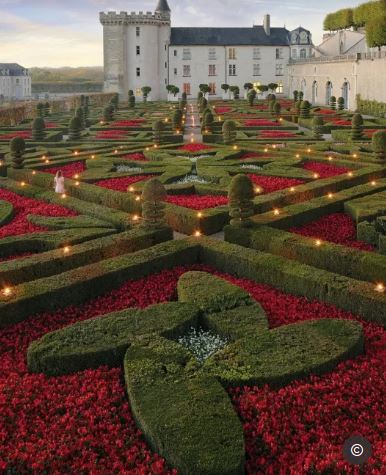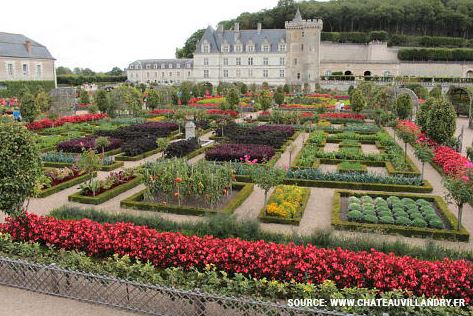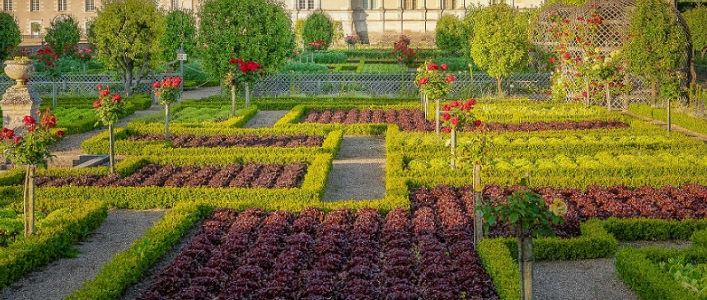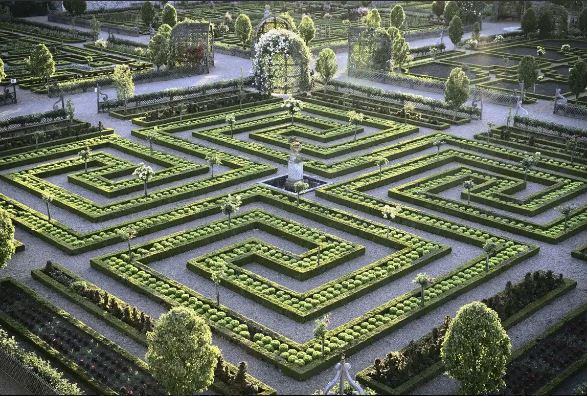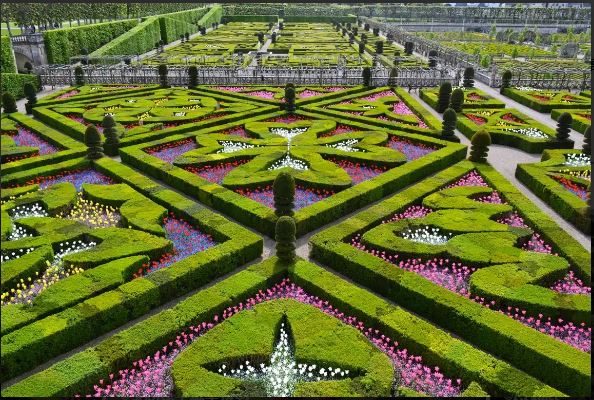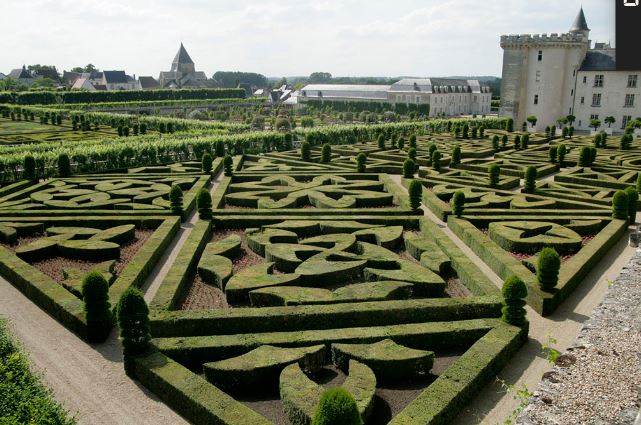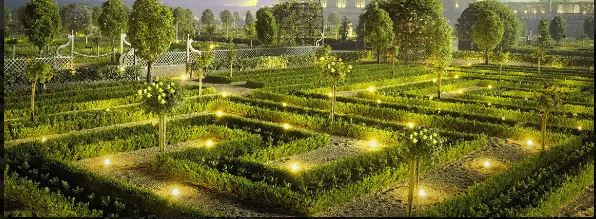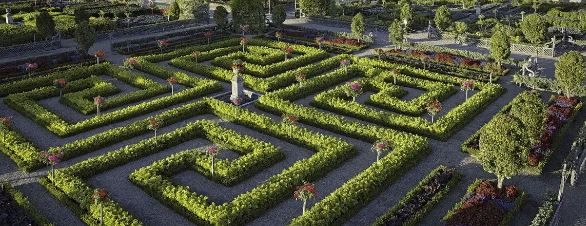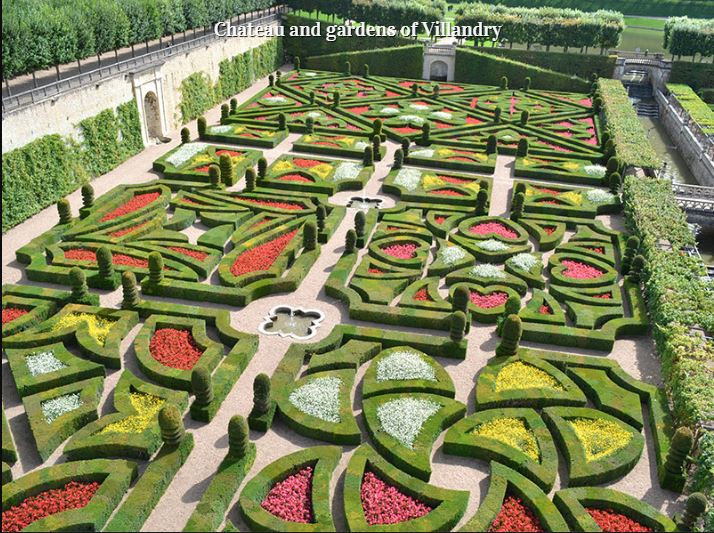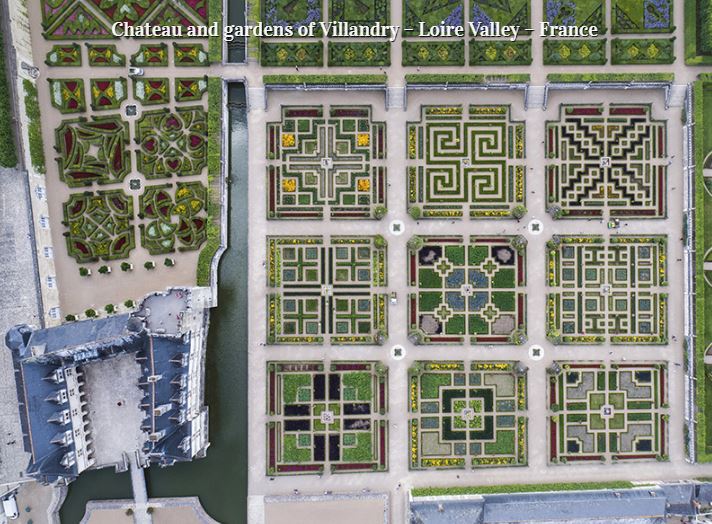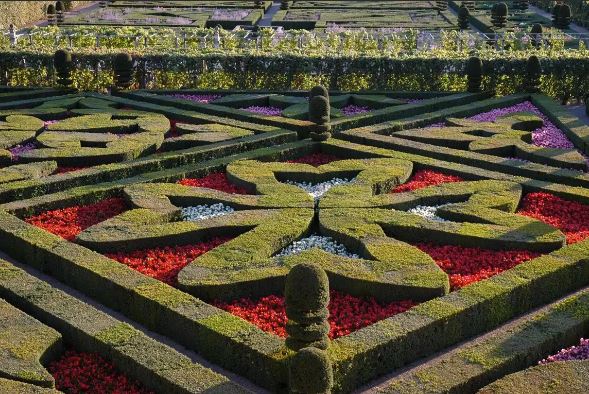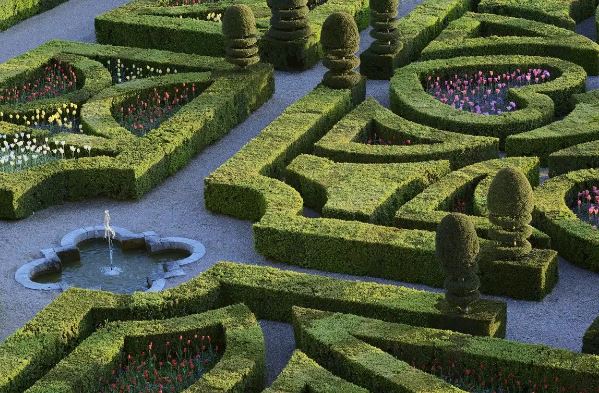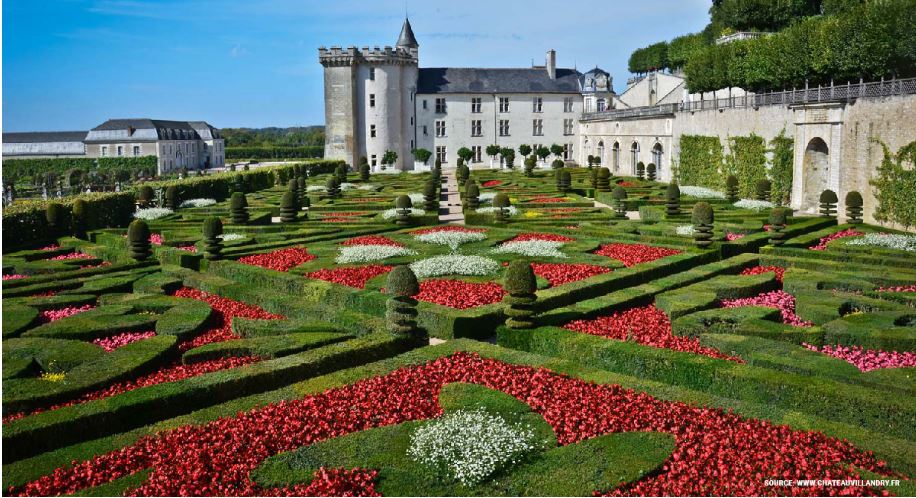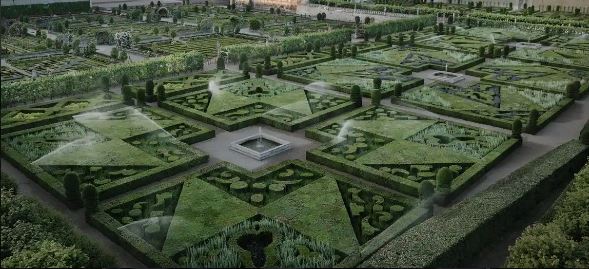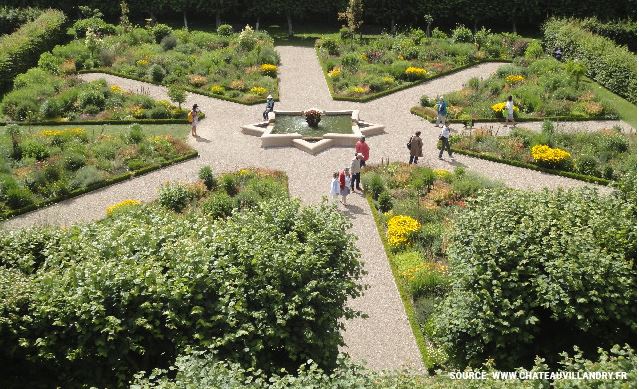"GARDENS OF VILLANDRY" FRANCE
Villandry is a Renaissance Chateau in a beautiful setting among three tiers of terraced gardens.
It was the last of the great Renaissance chateaux to be built on the banks of the Loire, and its architecture combines with gardens laid out on three levels, its best-known feature, in a happy marriage of beauty, diversity, and harmony.
The decorative kitchen gardens
The decorative kitchen garden has a profusion of colourful flowers and vegetables planted in a chequerboard plan. The effect of the seasonal variations is an ever-changing three-dimensional picture. In the ornamental garden, the box hedges form musical symbols, but pride of place is given to hearts, scrolls, butterflies, fans … allegories of love – tender, passionate, fickle and tragic. The water garden is the most tranquil: here the pool takes centre stage, with the sound of the fountains and the great lawned spaces bringing visitors a feeling of calm and tranquillity. This is the most peaceful garden you could find, ideal for relaxing or just dreaming! The sun garden, lending itself to dreaming. Perennials, rosebushes, shrubs, orange and blue-colored grasses can all be found flowering here from April to October. The site is completed by the herb garden, with its medicinal and culinary plants, and the arboured maze, where adults and children love to lose themselves. Villandry has been in the Carvallo family since 1906. It was Joachim Carvallo, a Spaniard, and his American wife, Ann Coleman, who created the gardens around 1910. The castle, which was refurbished in the 18th century, has recently been restored. This is a friendly, family home, where every room tells the story of an era, thanks to its furniture and careful decoration.
When Breton arrived in Villandry back in 1532, he had a different idea on how the castle should look like. The fortress was razed to the ground and was replaced with three main structures around the keep. Only the keep was left untouched because of the interesting story behind its walls. This is where the conference on the 4th July 1189 was held and where Henry ll of England signed ‘The Peace of Colombiers’ treaty (La Paix de Colombiers) before his death.
Jean was also interested in gardening and wanted to make the Chateau even more outstanding as it already was. With some help and his knowledge of the art of gardening, millions of visitors can now enjoy the beauty and diversity of the Villandry gardens.
According to other resources, the gardens were created later – in the 1900s, when Joachim Carvallo, a medical researcher from Don Benito, Spain, purchased the property. A lot of time and finances went into the restoration of the Chateau of Villandry and the creation of the spectacular gardens.
From the 1920s onwards, the Chateau is open for visitors around the world.
They cover 9 hectares of the whole property!
It is said that the gardens were Carvallo’s opus magnum, meaning his ‘greatest work’. He found peace and tranquillity creating and walking through the gardens, especially after he became a fervent catholic, according to other articles. Chateau the Villandry is genuinely unique and includes the following enclosures:
1.Water Garden, which is filled with small ponds and fountains
2.Ornamental Garden, where you can see different flowers and arrangements according to the seasons
3.A Large Vegetable Garden, which is also the most popular one in the castle. This garden was inspired by the medieval tradition of monks taking care of vegetable and flower plots around the monastery. You will find amazing flowers and vegetables, the colours of which represent different things. For example, it is said that the pergola in the vegetable garden represents heaven, and this spot has been used as a place for meditation and self-care.
4.The Sun Garden (Jardin du Soleil)
5.All the gardens are laid out on different terraces and create layers of beauty across the property.
To explore the gardens of Villandry is to explore the stylistic library of French garden art
From the mediaeval garden to the Renaissance garden, the garden “à la française” to contemporary garden design.
The gardens have been redesigned by Joachim Carvallo, who, having restored the Renaissance-style château to its former glory, is implementing his plan to give it a spectacular green setting. Seven gardens, organised according to the classification established by Joachim himself – kitchen garden and orchard, ornamental garden and water garden – have been born out of this monumental enterprise: the Ornamental Kitchen Garden, the Love Garden and the Garden of the Crosses, the Music Room, the Herb Garden, the Maze, the Sun Garden and the Water Garden.
Step by step throughout your visit
Immersed in nature that has been raised to the peak of perfection, you will discover an ephemeral painting that changes with the hours, the weather, and the seasons. The effervescence of life is a never-ending spectacle: the emergence of the first spring buds, the buzzing of the bee, the blooming of a rose, the running water, the swan carried along on the current, the gardeners hoeing or pruning the topiary.
alongside the château itself,
Villandry is most of all famous in France and all over the world for its wonderful gardens. Adults and children love strolling through the Renaissance vegetable garden, the "Love Gardens", the water garden, the medicinal plant garden and the maze, while not forgetting the flamboyant Sun garden, with plenty of photo opportunities.
Day by day, the estate's gardeners pamper the vegetables in the greenhouse, prune the roses and box trees, and look after all the organic plants and trees. Many species of birds flourish on the site, which is listed by the LPO, the French Bird Protection League.
A visit to the Château de Villandry is also a chance to see a series of rooms in beautiful 18th century style and a collection of vintage Spanish paintings. Villandry is located on the Loire à Vélo cycling trail, between Tours and Saumur. It is often a favourite stop for bicycle tourists, before they continue on to the châteaux of Langeais, Azay-le-Rideau and Chinon, which are all also in the Indre-et-Loire region.

